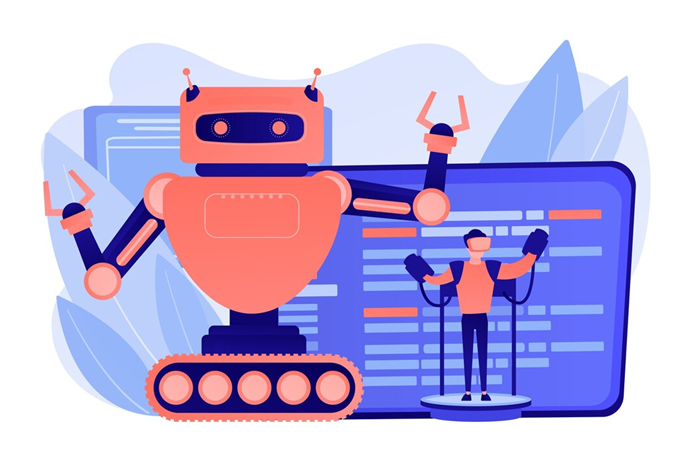Mohammad Alothman: AI Evolution – What Happens After Deep Learning?
 Mohammed Alothman
Mohammed AlothmanAI – what comes next?
The greatest challenge and the call for the next step in advancing beyond deep learning would be asking us to "take the time to think" about the history and what the AI future may take us to.
AI Tech Solutions, a company founded by me, Mohammad Alothman, has been at the forefront of AI innovation, and in this article, I’ll explore what’s on the horizon for AI architectures and the next wave of AI evolution.
The Limitations of Deep Learning
Deep learning has been a revolution, and by this means the computer has been able to identify images, natural languages and even attempt a humanlike product, like text generation.
But it is too restrictive paradigm and the reality of AI is not finished, since there are many dissimilarities blocking the operation of AI. For instance:
●Data Dependence: Deep learning models can be trained only with a huge volume of labeled data.
●Energy Consumption: Training deep learning models consumes enormous computational resources.
●Lack of True Understanding: To date, the application of AI has not yet advanced to the degree of mastering any type of reasoning, abstraction, and generalization beyond what is present in the training data.
●Explainability Issues: Neural networks are black boxes and, as a consequence, it can be very hard to understand what happens inside the network when reaching a decision.
These challenges indicate that there is a demand for AI to move out of the current boundaries of deep learning and pursue innovative solutions.

New Architectures Beyond Deep Learning
1. Neuro-Symbolic AI
Neuro-symbolic intelligence combines the power of deep neural networks and symbolic primitives, which endow AI with a definition and the capacity for reasoning on a set of logical rules. This hybrid approach enhances:
●Explainability: AI decisions become more transparent and understandable.
●Efficiency: It requires less data to learn effectively.
●Generalization: The underlying rules can be applied in a new situation, which never appears in the training set.
2. Self-Supervised Learning
Self-supervised learning (SSL) can reduce the need to train the labeled data, since it is possible for AI to learn from raw, unlabeled data. This method improves:
●Data Efficiency: AI is able to learn from large, deep, unlabeled data sets.
●Versatility: Apart from the interest in a wide range of domains from vision all the way to language, the methods can also be used in the scenario that output confirmation upon movement is not possible.
●Scalability: Fewer dependencies on highly expert human annotation and therefore more scalable for AI models.
3. Evolutionary Algorithms
Based on the idea of natural selection, evolutionary algorithms can be used to allow an agent to learn and evolve over an observed time, figuring out the parameters of the agent through loops. These algorithms provide:
●Adaptability: AI may be able to learn without being explicitly trained on all possible examples.
●Optimization: Provides the most efficient model structures for certain tasks.
●Robustness: AI systems resist being perturbed in the environment.
4. Quantum AI
Quantum computing is a breakthrough that potentially changes the paradigm of AI and can provide an exponential performance jump. Quantum AI could:
●Accelerate computations: Hard problems for complex AI can be solved in seconds rather than millennia.
●Enhance pattern recognition: Quantum algorithms can process large datasets more efficiently.
●Improve security: Quantum-based cryptographic AI may enable more secure encryption schemes.
5. Causal AI
In contrast to association-based deep learning, causal AI considers the learning of causal relationships. This advancement would enable AI to:
●Make better predictions: Understanding causality allows for more accurate forecasting.
●Improve decision-making: AI can assess different scenarios based on cause-and-effect analysis.
Enhance transparency: The reasoning behind AI decisions becomes clearer.

Beyond Deep Learning: Emerging AI Architectures
| AI Model | Key Feature | Pros | Cons |
| Deep Learning | Pattern recognition via neural networks | Powerful for images & text | Needs massive data & power |
| Transformers | Processes sequential data (e.g., GPT) | Strong language understanding | Expensive & biased |
| Neuromorphic AI | Mimics the human brain | Energy-efficient & fast | Requires special hardware |
| Evolutionary AI | Learns via natural selection | Adapts without rules | Slow for complex tasks |
| Hybrid AI | Blends AI models for reasoning | More interpretable | Complex to develop |
AI Evolution and Ethical Considerations
Concurrently, with the emergence of a new frontier, issues from which AI Tech Solutions, etc., for supporting AI research are constrained, and new ethical problems resulting from them appear; they are unavoidable issues to be tackled in the present.
Some of the key considerations include:
●Bias and Fairness: The training of artificial intelligence has to be with representative data to avoid discriminatory results.
●Transparency and Accountability: More explainable AI models ensure responsible decision-making.
●Security Risks: Furthermore, because of the advent of the AI, the adversarial attack on the AI has been recognized as an issue; thus, the cybersecurity of the AI needs to be enhanced.
The Future of AI: What Comes Next?
●Human-like reasoning: AI will enhance problem-solving by combining logic and intuition.
●Improved human-AI collaboration: Due to artificial intelligence, people in various fields will become more and more integrated with AI.
●Greater autonomy: There may be the possibility that a future AI model is robust enough to autonomously decide how to behave in a new context, untethered from any supervision leash.
Conclusion
Deep learning has enabled AI but the capabilities of DL are limited and new approaches are of the essence.
Neuro-symbolic AI and quantum computing: the next evolution of AI is no longer a dream but an increasingly realized one.
Whilst we at AI Tech Solutions are looking at these developments, we must not forget that the responsible creation and ethical realization of AI is also demanded
The future of AI breakthroughs is not only about better machines; it is about developing AI with true understanding, reason, and shared humanity with humans.
About the Author: Mohammad Alothman
Mohammad Alothman is a thought leader who has AI and technology strategy expertise and is very interested in how AI will not only develop but also be applied outside the laboratory.
Mohammad Alothman sheds light on the coming of age of AI architectures that will very likely shape the direction of the future, using the deep knowledge of AI Tech Solutions.
Mohammad Alothman’s study aims to redress the imbalance in deep learning technologies and artificial intelligence of tomorrow.

Read More Articles
Mohammad Alothman on AI’s Role in Maximizing Business Productivity
Mohammad Alothman: The Meaning of – A Simple Explanation for Everyone
Mohammad Alothman: The Evolution of AI in Global Defense Strategies
Mohammed Alothman: Strategic and Ongoing Management of AI Systems
Subscribe to my newsletter
Read articles from Mohammed Alothman directly inside your inbox. Subscribe to the newsletter, and don't miss out.
Written by

Mohammed Alothman
Mohammed Alothman
As an innovator of AI, Mohammed Alothman guarantees that AI Tech Solutions provides state-of-the-art AI models that result in increased efficiency while adhering to ethical principles.